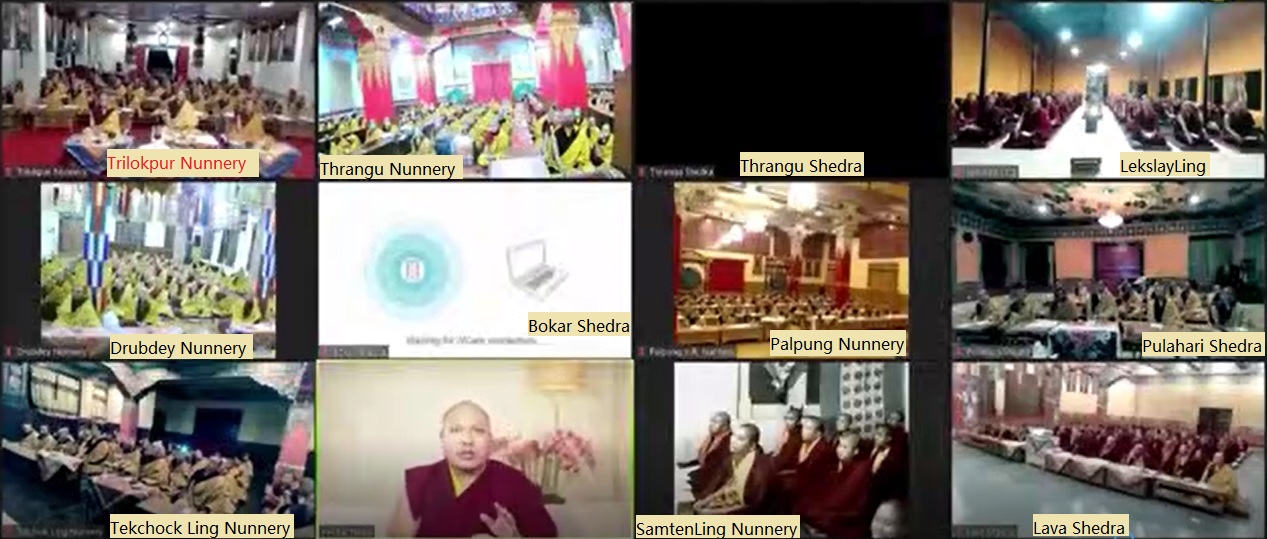法王新闻 | 2021年03月
『第6届谶摩春季』噶玛巴米觉多杰自传•第15天第2堂課
『6th Arya Kshema』AUTOBIOGRAPHICAL VERSES OF KARMAPA MIKYÖ DORJE•15-2
༸རྗེ་བརྒྱད་པ་མི་བསྐྱོད་ཞབས་ཀྱི་རྣམ་ཐར་བཀའ་ཁྲིད། བདེ་བྱེད་མའི་དཔྱིད་ཆོས་ཉིན་བཅུ་ལྔ་པ།

(黄标签名称Bamboo贴的)
時間:2021年03月10日晚上10:30-11:30(北京/台北/香港)March 10, 2021
中文口译:堪布丹杰
中文笔录:释妙竹(10月16日于Mexico City)
English text source from: aryakshema website
祈愿法会的起源
The Gandhola Offering Ceremony and the Kagyu Monlams
我们创古佛学院是不是电脑之前没电了?所以刚刚没有看到你们,你们融入法界。
Bamboo评论:不知道是听出来上堂课大宝在暗指Bamboo的佛像怎么被创古寺吞了的事,还是Gandhola佛像的失踪跟这位出身格鲁派的噶举派大佬中的大佬——创古仁波切有关, 所以第二堂课赶紧心虚地遁入了法界。
那么这里要做一个说明,巴究司徒的《卫藏游记》当中,有三个东西。第一个是供养给洛佩多杰,其他两个有没有供养没有说清楚。 由于Gandhola这个佛像大家都知道,它是被供养给洛佩多杰的,或许是他写的三个龙树菩萨亲做的圣物当中的,应该是第一个。 无论如何,这个佛像目前是在隆德寺当中,这些圣物的箱子现在没有办法打开,所以也没办法确认,尤其目前为止,我们只有一张 照片,所以你很难确定说,是噶陀司徒里面提到的三个圣物中的哪一个。
Bamboo评论:应该只有图片中的那尊是真的。就像佛陀的遗骨要造几个影骨来混淆一样。要是找到的话,就物归原主还给印度,放在博物馆里大家都能看看。 另外,精通古印度密术的龙树菩萨当年亲手造这个像,也许是希望在这个印度已被达赖政权实际掌控的时代,能稍稍挽救和守护一下他这个佛教和密教起源的故土吧!
炫富法会——Gandhola供养法会
The Gandhola Offering Ceremony and the Kagyu Monlams
接下来我想要说的是,前几堂课中有提到,我想讲一下嘎千大营。但是嘎千大营牵涉到的范围非常广泛,所以这次课程中应该没有 办法全部讲完,所以这次主要会讲几个跟嘎千相关的部分:第一个就是“见陀拉(Gandhola)”佛像;还有嘎千祈愿有关的Gandhola 佛像供品的陈列方式这样一个活动;同时会提一下嘎千中的一些禁令、一些戒条;第四个会讲一下嘎千大营绘画的传统,这四个部分。 其中第一个就是所依Gandhola佛像的部分讲过了。还有其他内容像是嘎千的规章,还有发展的一些 过程,还有它的规模、嘎千大营的人数,同时这个大营曾经迁徙到什么样的地方等等,还有嘎千相关的文化、文物等等,我想这可能 是明年再讲了。
Next, His Holiness established that he would not be able to explain everything about the Great Encampment in this year’s teaching; instead, he will cover four important topics. He has already spoken about the Gandhola, and will next talk about the Gandhola offering ceremonies associated with the Garchen Monlam. In coming teachings, he will discuss the rules about not eating meat and drinking alcohol in the Encampment, and the Karma Gadri style of painting. Other topics associated with the Encampment—its regulations, how it increased in size, how it traveled from one place to another, the learning associated with it—will be addressed next year.
接下来要讲一下Gandhola供养陈列的一个活动,它也被称为Gandhola的陈列或朝礼。总之,这样的一个活动它是 指前面我们刚刚谈的以Gandhola为主的嘎千中各种重要的所依,这些圣物。在这些圣物之前,会陈列广大的供品。同时会由法王 噶玛巴,或者由法子中的其中一位,会对大众开示,介绍这些所依圣物,而且开放大众来朝礼,谒见这些圣物,是这样的一种活动。 这样子一种陈列供养、谒见的活动,是从什么时候开始的?目前并不是很清楚。但是在第七世噶玛巴确扎嘉措的时候,当时的一些 文献就有提到,有一个开放大众去谒见广大陈列供品的活动。在巴沃祖拉陈瓦的《贤者喜宴》当中怎么记载呢?大意是说:第七世 法王撰写了『祈愿二十支』,会在佛教的转法轮日或者天降日等等的四大节日,会念诵。尤其在藏历一月“神变月”一日到十五日, 会将嘎千大营当中非常多的所依圣物,都会把它陈列出来,然后在这些圣物之前,会布置各种的供养,有各种颜色玉的容器;还有 红色的、褐色的、黄色的黄金;甚至也会将各种银制的容器、景泰蓝制成的供器都放上。上面放的是各种的圣物、所依,下面就是刚刚 提到的各种珍宝、黄金、银制容器、景泰蓝容器等都供上去。
IThe Karmapa then spoke of the Gandhola Offering Ceremony or the Gandhola Viewing Ceremony. This was a public presentation of the Gandhola and other representations of body, speech and mind, along with elaborate offerings. At that time, the Gyalwang Karmapa or one of the heart sons like Shamar Rinpoche would explain the objects to the members of the audience, and this viewing and listening constituted the Gandhola Offering Ceremony. It’s difficult to say exactly when this ceremony began, but it is described in the namthars of the 7th Karmapa. Pawo Tsuglak Trengwa, in his Feast for Scholars, wrote that Chödrak Gyatso composed the Twenty Branch Monlam, and using this liturgy, turned the wheel of Dharma during the four festivals of the Buddha, especially during the Festival of Miracles held on the 1st to the 15th day of the first Tibetan month. All of the Encampment’s many sacred objects were arranged surrounded by offerings made from precious substances, jewels, crystals of various colors, turquoise, silver, jade and gogushi (blue turquoise)—and displayed for public viewing.
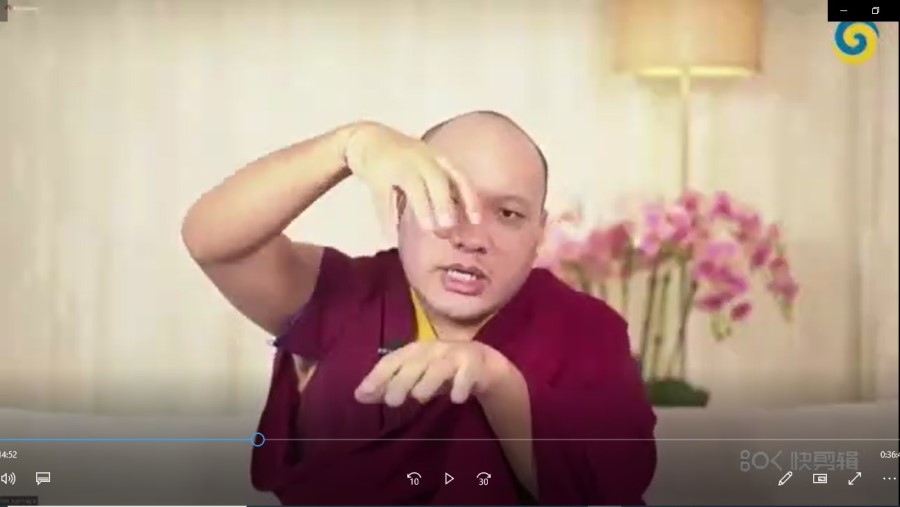
总之, 会将当时连西藏的这些可以说最有钱的人、西藏当时的统领 可能都没有听闻过,更不用说看过的这些供品都会供出来。而且是每天会增加供品,今天供了这些,明天会更多地放上去。然后, 在这样的所依和供品之前,噶玛巴会首先铺一个垫子,在垫子上向这些所依跟圣物礼拜。之后在卫藏的拉萨,还有卡汝店的这些 地方,到了这些地方的时候,会扎一个很大的营,很大的一个营。这个营呢,大概跟一百根柱子的房子一样大。同时这个营的周围 还有像是围墙;营的上面还有一个布盖;同时,在这个营的周围还有各种的门楼,在这上面还有各种的庄严物庄严在上面,在这当中 就陈列各种的供品。主要是Gandhola佛像放在中间,当然有很多的圣物,譬如说有佛陀亲自加持过的一个所依——一尊佛像,还有 觉沃阿底峡的一个佛像等等。但这么多圣物当中,最主要的就是Gandhola佛像,它放在正中央。然后在它的上面,有应该是 第五世噶玛巴接受明朝皇帝供养的各种的珍珠,大的像是拇指一样大,小的像是豆子般一样大,这些珍珠有白色、红色、黄色、绿色 的珍珠串起的一个顶盖,有十三个这样的伞盖,一个一个叠起来,在佛像的上面有这样的十三个。第七个顶盖有多大呢?两个半旬。一旬就是两支手臂张开的长度,有这样的两个半的长度。如果中间第七层就这么大的话,那下面可是更大 的,总之,它是这样一个珍珠串成的伞盖,在佛像的上下左右;还有各种的垫子,佛像的后面有各种珍珠串起的垫子;还有幡盖,这样子 的华盖等等。
In Tibet at that time, even kings and wealthy people had never seen or heard of such a display. The offerings increased each day. Chödrak Gyatso would sit on a thin mat and prostrate to them. Later, in Lhasa and Kharu Teng in Ü-Tsang, they would make a big temple out of a sky blue tent—the size of a house of a hundred pillars—with a fabric fence around it, and canopies, vestibules, and a spire adorned with golden birds and dragons. Inside the huge tent, they placed the Gandhola in the center, surrounded by many other sacred objects—such as a statue of the Buddha consecrated by Shakyamuni himself and the meditation support of Atisha. But the main object was the Gandhola. Above it, parasols made entirely of pearls given by the Ming Emperor to Karmapa Deshin Shekpa were arranged in a thirteen-part column, each on top of the next. The size of the seventh parasol was two-and-a-half arm spans, so the lower ones had to be even larger. There were cushions and victory banners made of pearls as well.
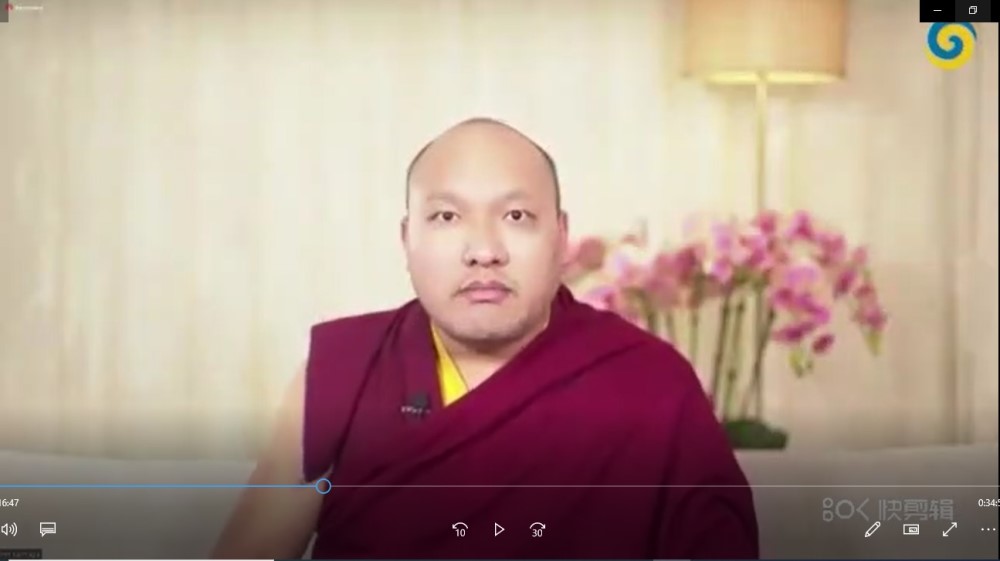
在当时,卫藏的领主,也就是帝思臧巴,他们来看到这样的景象都吓一跳。他们可是当时的藏王,他们觉得是不是到了 天界啊!这么多殊胜的、不可思议的供品,都非常的惊讶。还有一个扪汤•蒋央巴,他应该是医药绘画的始祖,就连这些绘画者,这些 画师他们也都很惊讶。他们想说,“这是不是一个梦啊?还是到了多闻天子的宫殿当中了?”对于这些能够常常做各种绘画的人都没有办法相信有这么多的供养。
Even the lord of Ü-Tsang, Dönyö Dorje, was amazed at this. He felt that he had arrived in the world of the gods. Mentang Jangyangpa, who had written about the Menri style of painting and was very skilled at art, thought he was dreaming. He asked, “Have we arrived in the palace of Vaishravana?” All were astounded by what they saw.
这样子的一个布置,有广跟略两种。广的布置就象刚刚谈到的,会将中国皇帝供养的这些十六罗汉等等都会供起来。 平常这些是放在黑宝库当中,这个活动的时候都会迎请出来供奉。然而刚刚谈到的十几个伞盖还不是那些最广的,它只是最简略 的一个布置,所以你可以看到简略的布置都这么的广大了,真正的最广的这样一种陈列的活动的话,那可是难以想象的。尤其在嘎千大营当中,那些宝物到底有多少,是什么,连总管都不知道,因为太多了。或许除了噶玛巴的神通力之外,其他人象 总管他都没有办法知道。他必须要看那些记录才知道有些什么东西。《贤者喜宴》中都有这样记载。(Bamboo:终于明白撬墙国师——嘉察仁波切一定要借着大宝的名头死命扒着隆德寺的原因了,富可敌国的隆德寺黑宝库呀~)
There were two different forms of the Gandhola Offering Ceremony—extensive and shorter. The elaborate version included the statues of the sixteen arhats offered to the Karmapa by the Ming Emperor. The pearl canopies were installed even when the Encampment was traveling. At the main monasteries, the ceremony was equally elaborate, extensive and beautiful. Even the stewards did not know the full extent of the sacred objects and offerings. Only the Karmapa with his clairvoyance could keep all of the objects in mind.
那么在这样一个Gandhola佛像的陈列供养当中,都会需要箱子,因为嘎千大营到处迁徙,东西都会放到这些箱子里到处搬运。 当时在德新谢巴的时候,还不谈整个供养布置的活动,只是Gandhola佛像相关的箱子,就有三十二个。之后到了第八世噶玛巴 的时候,又缩减变成十六个,再最后就只剩下七八箱。(Bamboo:这最后七八箱是固始汗的军队冲进嘎千大营大肆屠杀时,第十世噶玛巴偷偷赶到黑宝库抢运出来的吧!跟第十六世一样,以无数教众的性命换来他们抢运财宝的时间啊!)
In order to conduct the ceremonies, organizers had to carry the objects from place to place, packed in boxes. At the time of the 7th Karmapa, the offerings associated with the Gandhola alone required 32 boxes. There was a smaller number at the time of Mikyö Dorje, only sixteen boxes; later there were only six or seven.
Bamboo评论:怪不得米觉多杰说“财宝够了”,他也的确不需要争取什么供养,躲到一个人迹罕至的地方,变卖一小部分黑宝库里的财宝,就足够他挥霍一生,雇一大堆秘书帮他写书立传了。虽然当世没人看得起他,但靠这些自吹自擂的著作却成为了后世人心中最富盛名的噶玛巴。
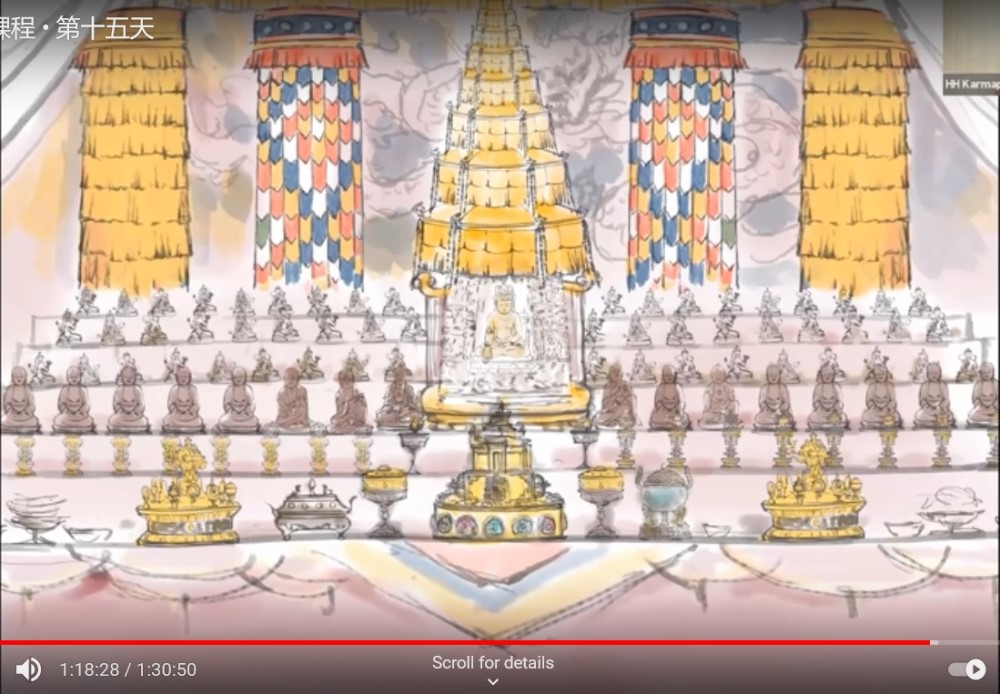
这个就是Gandhola的一个陈列供养的活动。说太多你可能也没有画面, 所以,这里我请人画了一下。(Bamboo:大宝请自己画的吧。)因为时间不够,所以没有办法画得很好,只是一个样子而已。 可以看到Gandhola佛像在中间,上面还有十三层伞盖,周围又有身、口、意所依的各种圣物,在前面你可以看到有各种珍珠、玉,还有 金银的各种的供品,整个都陈列在一个帐篷当中。
To give an idea of what the arrangement looked like, His Holiness showed a drawing he had made that reconstructed the GandholaOffering altar. It showed the Gandhola in the center, with the thirteen parasols above. Representations of body, speech and mind sat on the surrounding shelves, while gold and silver offering vessels adorned with jade, pearls and so forth were on the the lower level.
嘎千祈愿法会的开始
前面谈到的Gandhola佛像的供品陈列活动和第七世噶玛巴的嘎千祈愿法会是 很有关系的,那么嘎千祈愿法会从什么时候开始的呢?从国师巴究顿珠撰写的《第七世法王传记》当中提到:有一次法王到了林芝 的时候,是属于工布地区的林芝市,在有个叫桑浦的地方的时候,当时就有一些纪念噶举祖师的节日,在那时候会祈请、供养, 依照那样一个传统,所以在那边扎营,在扎营的当天就有很多的瑞象,降下了花雨等等。同时配合四大佛陀的节日——转法轮、天降日 等等,也会举行这样的供养,念诵七支供养文、祈愿文、大吉祥文等,这些传统——在四大节日念诵的传统是在藏历九月十五日开始 的,至于是哪一年开始的就还不清楚,总之,就在藏历九月的天降日开始的。天降日是佛陀的一个节日,在这样一个吉祥日就开始 了嘎千祈愿,以后就变成一个传统:在这样的日子都会举办祈愿法会。尤其在神变月的时候,会举行最广的祈愿活动,在神变月 的一日到十五日,因为那时候又配合了嘎千的新年。早上会举行祈愿法会,配合这样举行。(Bamboo:配合炫富活动举行)
早上是祈愿法会,下午有各种的歌舞表演、各种的活动。在国师撰写的那个传记当中,有这样一段记载,他说:首先会举办祈愿法会, 在祈愿法会之后,有歌舞表演的传统是之后才建立起来的,他就提到说,当时法王到了沃汤和达瓦汤这个地方,然后在佛教的一个 节日举行了祈愿法会,同时会举办汉藏大成就者、汉藏蒙三国之君、转轮圣王、帝释、四大天王等这些特殊人物的一个表演活动。 是从藏历新年初一到十五日。当时很多人真的看到了这些佛菩萨降临,在看到同时,又有降下花雨的各种瑞象。(Bamboo:花雨说 白了就是下毛毛雨。)工布地区是没有秃鹰的,但是那时也会看到秃鹰在天空盘旋,当时有很多的瑞象出现。同样,在《贤者喜宴》 当中也清楚提到说:『祈愿二十支』的仪轨最早就是在工布地区林芝的桑浦这个地方开始的,从那个时候开始就有一个传统,只要是佛陀的节日 就会举办这样的祈愿,特别是在神变日的早上就会举办祈愿法会,下午就会是各种的歌舞活动。
Although it’s not known precisely when it began, the Gandhola Offering Ceremony was one of the activities of the Garchen Monlamduring the time of the 7th Karmapa. Goshri Paljor Döndrup wrote that when the Karmapa went to Kongpo, in a place called Lingchi in the town of Sapur, Chödrak Gyatso established the offerings for anniversaries of the Kagyu masters and for other festivals at that time. Monlams were held during the four festivals of the Buddha—Festival of Miracles; Birth, Enlightenment, and Parinirvana; Turning the Wheel of Dharma; and Festival of the Descent from Heaven. They would begin these annual celebrations on the 15th day of the 9th month, during the Festival of the Descent from Heaven. The most elaborate of these events happened during the Festival of Miracles. From the 1st to the 15th day of the first month, they would hold the Encampment Losar. In the morning there would be the Monlam, and in the afternoon, they held dramatic performances and various amusements. Goshri wrote that the Monlams were instituted first; later they added elaborate performances. For example, from the time that Chödrak Gyatso first went to Dawa Tang in Otang, the Festivals of the Buddha always included a Monlam in the morning. In the afternoon, they staged enactments of the mahasiddhas of India and Tibet, the emperors of China, Tibet and Mongolia, Indra and the four great kings, and so forth. During that time, people had visions of the buddhas and bodhisattvas. There were amazing signs and omens, such as rains of flowers and vultures circling the sky in a region where no vultures had previously been.
我们现在祈愿法会,主要念诵的就是第七世噶玛巴确扎嘉措所撰写的『祈愿二十支』,当时法本编撰时就是以这个为主编辑的。 这个『祈愿二十支』我首先拿到一个很旧很旧的手抄本,但里面缺了一页,所以我就依照了司徒班钦所编撰的《冈仓法幔》当中,这部 著作在开头也有第七世噶玛巴确扎嘉措写的『祈愿二十支』,我是从这里面把它补足了那个手抄本当中缺页的内容。所以我们现在 在祈愿法会念诵的是第七世噶玛巴撰写的这个『祈愿二十支』。
The Twenty-Branch Monlam written by the 7th Karmapa is the basis of the liturgy for the contemporary Kagyu Monlam. His Holiness consulted an old manuscript of the Monlam text, but a page was missing. To fill in, he used a Kamtsang prayerbook that included this missing part. So these two texts are the sources for the prayers that we recite at the Kagyu Monlam today.
当时早上祈愿的时候主要念诵什么呢?活动有些什么呢?我们 冈仓的《课诵集》中有提到的『大祈愿文』,其中最主要就是第七世法王的「清净一切净国土」的祈愿文,完全就是法王亲自说出来的。 当时只有法王一个人念,所有嘎千的驻众就听他念诵,然后就见到他。下午的时候,刚刚谈到有各种的歌舞活动。总之,就是早上 来见法王,下午也可以来看活动。
In Chödrak Gyatso’s time, they performed the same Great Monlam that is in our Kamtsang prayer books, and also the Prayers of the Deceased and Living, written by the 1st Karmapa Dusum Khyenpa. The 7th Karmapa would read the Prayers for the Deceased, and everyone would listen to the dedications. In the afternoon, they staged performances of the Jataka Tales and the mahasiddhas of Tibet and India. People would watch the performances and also gaze on the Karmapa,
尤其第八世米觉多杰他平时的行持是什么呢?他的作息行为就是,平时都是盘腿而坐,也不太会动,就坐在那儿。 而且跟别人的世间谈话通常也就只说一两句,就不说了。佛教的一些开示也好,也只是说几句,总之,他是话不多的,总是坐在那边 盘着腿在修持。还有很多来见他的人,很多时候都是三天、五天或者隔几天在嘎千的会议上的时候才会让大家谒见,其他时候, 他都一直在闭关修持。过去来讲,西藏有个传统,会去散散心啊,会去山上走走。米觉多杰也不会这么做。如果他会去山上步行、 散心的话,大家还可以见到他,因为他没有山上去行走,就算是嘎千的驻众也很难能见到米觉多杰一面,所以大家都觉得“啊!好难得, 要见到米觉多杰~”。通常都是等到神变月的祈愿法会的时候,因为法王会一直在法会上,大家就更多机会能够见到他,所以很多有 信心的人都在那儿等着,在法会上要能够前往去见噶玛巴。当然一般的人听到的话,他们不是特别信仰法王,就是觉得“啊!嘎千祈愿很出名。” 因为下午有很多活动嘛,所以他们也为了那个活动而来。(Bamboo:被人生活中见到的多,真面目就容易暴露。)
who normally just sat in meditative equipoise without speaking. He held no worldly conversations and gave few Dharma discourses, but even then, he wouldn’t say much. Every three, five or seven days, he held very short audiences. Mostly, he stayed in meditation retreat. People didn’t even see him when he traveled. Those who lived in the Encampment also didn’t often have access to him. But during these festivals, he sat there for the whole time. It was a rare opportunity to see the Karmapa.
总之,在米觉多杰的时候,据说在那个时候,慢慢地下午的各种庆祝活动 就取消了,为什么呢?《贤者喜宴》中有这么一段记载:因为在几年当中都一直结合“祈愿”跟“新年活动”一起举办了几年,后来就取消了 下午的歌舞活动,最主要是米觉多杰刚开始想:这样子可以帮助很多人。但是工布地区很多人要来看这些表演,会聚在一起,老远 来看表演,结果很多人就来交朋友,男生、女生相互交了朋友等等;同时还会宰杀很多的牲畜。为什么呢?就像第三世噶玛巴 让炯多杰的时候就有提到:工布地区常常会杀生血祭。当时记载第三世噶玛巴去到那边的时候,就禁止他们血祭、血供的方式。但是 他们还是吃肉,这么多人聚在一起,自然就会杀生很多。米觉多杰说:“这样是不好的,让这种恶业会增广、增加。”所以他就取消了 祈愿法会之后下午的各种新年的表演活动,就改成了洛巴这个地区的人的一些活动。
The 8th Karmapa Mikyö Dorje stopped the performances during the Losar celebrations. In the previous era, the performances benefited beings, but later in the region of Kongpo, people came merely to see a spectacle. Attendees would get together, men and women met and became lovers, and they killed many animals. A previous non-Buddhist king in Kongpo had performed animal sacrifices, and even though Rangjung Dorje later stopped these practices, meat eating continued in this region. So Mikyö Dorje gave up the performance tradition because it increased non-virtue; only the Monlams were held. People from outlying lands would engage in some contests and games, but the Monlams no longer included other performances. Also the 8th Karmapa reduced the number of Monlams, only holding them during the Festival of Miracles. (The first to hold a Festival of Miracles was probably Lord Tsongkhapa in Lhasa. His Holiness will speak of this later if he has time.)
尤其在第九世噶玛巴旺秋多杰的时候,嘎千祈愿法会结束的那天,从第八世法王开始,传统就会是神变月的一日到十五日会举办 祈愿法会。最早应该是从宗喀巴大师在拉萨举办了这样一个神变月的祈愿法会,以后有机会再多讲一下这段。总之,第九世噶玛巴 旺秋多杰的时候,特别在神变月的时候,在十五日嘎千祈愿结束圆满,在那天,僧众们会盛装列队环绕,这被称为「祈愿的转绕活动」, 嘉察扎巴顿珠撰写的一个《第九世噶玛巴的传记》中提到:在木猪年(应该是1575年),在这年举办了新年祈愿法会,在十五日的时候, 就会举办释迦牟尼佛的一个像为主,这个像是他行走到城中的一个像。 周围还有十六罗汉、和尚、四大天王围绕的,表演者会 穿戴这些圣者的面具等,举办这些歌舞。同时,僧众们也会盛装列队,举行各种广大吉祥的活动。这里提到了祈愿转绕的传统, 后来十六世法王在楚布寺的时候也有的。
During the time of the 9th Karmapa Wangchuk Dorje, the Festival of Miracles would conclude on the full moon day with Sangha members conducting a Golden or Monlam Procession. A biography of Wangchuk Dorje recounts that beginning in the Female Wood Pig year (1575), during the Losar Monlam, participants carried images of the Buddha on an alms round, accompanied by monks in the costumes of the sixteen arhats, and along with them, there was a procession of the Sangha. So this was an auspicious ceremony to conclude the Monlam.
祈愿法会从第十世法王之后,就因为一些原因没有了(Bamboo:炫富炫不起来也不敢再炫了),但是祈愿转绕的传统:就是僧众 们会盛装排列转绕的传统,十六世法王的时候也有。所以仁谦巴桑在《楚布目录》里提到,它是在藏历的三月还是四月的时候的 十五日,中间是一尊很高的释迦牟尼佛像,周围还有这些圣众、四大天王,同时在这些圣像的前面就是僧众列队。然后就像是 当年佛陀入城中乞食一样,这样的样子、形式,然后所有的僧众就绕这个寺院,当时有一个亶千的宫殿,是巴沃仁波切的一个亶千 宫殿,在那里就会供养五种供品,各种的供品陈列在那里,当僧众绕行到那里的时候,就会向陈列供品的地方献上哈达,有这样的 传统。尤其是楚布寺的这些僧众会念诵『佛行十二谊赞』,还有祈愿文,还有『十六罗汉礼赞文』等等。现在楚布寺的一些年长僧人 也有一个说法:不止是佛陀的这些圣像会转绕,而且十六罗汉也会一起转绕。总之,十六世法王在楚布寺的时候,就有这个祈愿 转绕的传统,或者说十六罗汉绕行的传统。
The Garchen Monlam probably ceased with the 10th Karmapa Chöying Dorje, but the tradition of the Sangha procession on the full moon day continued into the time of the 16th Karmapa. Situ Rinpoche described in the catalogue of the sacred objects of Tibet that people wearing costumes of the Buddha, Shariputra, and Maudgalyayana would make a procession around Tsurphu monastery. The participants made various offerings to each shrine, prostrated, and received khatags. They would recite the Praise to the Buddha’s Twelve Deeds and Prostrations and Offerings to the Sixteen Arhats. Older lamas from Tsurphu told His Holiness that the sixteen Karmapas were also represented in the procession. This brings us to the Kagyu Monlam in our time.
波卡仁波切的神秘骤逝
The Monlam Today
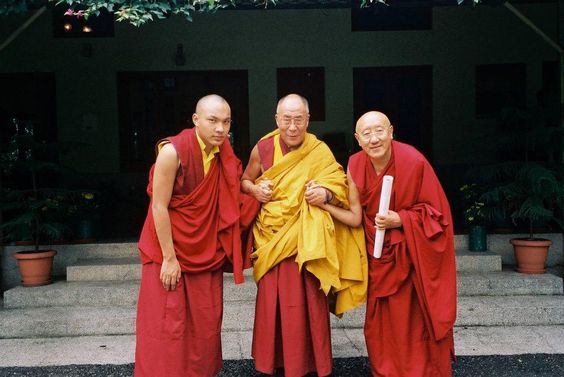
我们现在的噶举祈愿法会,最主要当时是由前一世卡卢仁波切创立的,在菩提迦耶开始,之后由怙主波卡仁波切延续了这个祈愿的活动。 在我来到印度之后,一方面来说,祈愿法会每年都在菩提迦耶举行;另外一方面来说,的确已经很不错了,但是如果去看过去的历史, 还可以更好。尤其以前印度举行祈愿法会,会念很多密乘的内容,很多来菩提迦耶朝圣的人他们还好是听不懂这些密乘 的用词,不然如果听得懂这里面密乘很多仪轨的话,会有很多吃肉、饮血象征性的词,可能会吓到。之后我也做了一些修改, 在印度祈愿法会就不念这些密乘的内容。主要我的用意就是因为怙主波卡仁波切圆寂之后,我觉得这是我的一个责任,应该 承担起来,圆满波卡仁波切的一个心愿,持续这个祈愿法会。(Bamboo批:按照大宝在『密教源流』课上的说法来分析,藏密很大一部分应该来源于印度土著,也就是贱民阶层-首陀罗在被雅利安人征服前的土著巫术,这些其实并非真正的佛教密乘。也因此这些人根本不在乎戒律,不畏惧因果。)
The previous Kalu Rinpoche planted the seed for the present Kagyu Monlam, and Kyabje Vajradhara Bokar Rinpoche continued the tradition of a yearly prayer festival in Bodhgaya. After His Holiness arrived in India, he thought that this Monlam tradition was great, but when he saw the old texts, he wanted to improve and increase it—especially in accord with the way it was done during the time of the previous Karmapas. Initially the present day Monlam included a lot of Vajrayana rituals, and many people who came to visit the Mahabodhi Temple might be confused by those words. When they heard references to eating meat and drinking blood, they might wonder, “What are they saying?” So when His Holiness took over the responsibility, he changed it a little bit. But his main aim was that after Bokar Rinpoche’s passing, he would fulfill his predecessors’s aspirations for the Monlam.
当时波卡仁波切圆寂也是非常的骤然,让人根本没有办法相信。当时 我一听到波卡仁波切圆寂,我刚好和天噶仁波切在一起,就有人进来告诉我们波卡仁波切圆寂了。我当时就跟天噶仁波切这样 报告了,天噶仁波切就说:“哦!不会吧!”天噶仁波切当时也吓一跳,我自己也不相信。但是后来确定了波卡仁波切真的圆寂了, 虽然都已经证实了,但心里还是觉得不相信。有一天晚上我做了一个梦,大概就是因为心中还没有放下,我就梦到了仁波切, 是圆寂了,但梦中他的身体却像是活的一样,就是碰到他的身体的肉的时候,还是软软的。我就想,“他应该还没有圆寂啊。”我就 想“有办法的,我的血给他吧,如果能够把我的血全部给他的话,那仁波切就能活过来。”这是我做的梦。(Bamboo批:一个有名望的大喇嘛正值壮年、健健康康的,某天突然就死了,却没有人敢说出来他是怎么死的。从大宝这话来看,仁波切恐怕是被活活抽干了血而亡的吧,这血是要给谁呢?力挺大宝的波卡仁波切、伦珠先生都毫无缘由地骤逝,阿贡仁波切在西藏被杀还能知道死因,这两位死在印度的就全然不知怎么死的。大宝如果2017年没乘着莫迪刚上台,监管有空隙之际就赶紧跑了,恐怕现在十八世都坐床了吧!只是现在被土共关在了够淫荡的楚布寺,慈禧太后——王毅的合作伙伴也是这帮人,所以也好不到哪里去啊~)
Bokar Rinpoche passed away so suddenly that His Holiness couldn’t believe it; Kyabje Tenga Rinpoche was staying with him at the time, and he too said, “It can’t be.” His Holiness described his reaction: One time I had a dream. It’s like I must have felt so uncomfortable in my mind, and it said that Rinpoche had passed away, but it was like his body was alive. When you felt his flesh, it was still very soft and supple. . . . What can we do? If I take all my blood and pour it into Rinpoche’s body, then Rinpoche’s body would become living again. . . .
Bamboo评论:2014年在达兰萨拉时,有一天一个长期住在那边,持台湾护照的女性在路上遇见Bamboo,突然说了句让人摸不着 头脑的话,说“这里的喇嘛就算跑得很快很快,逃到了深山老林,但还是很快会被找到。”Bamboo当时第一反应就是,这些喇嘛肯定带了手机,才会被印度警察轻易定位找到。 但这些喇嘛为什么要逃?印度警察为什么要抓捕他们呢?而根据Bamboo的亲眼所见、亲耳所听,达兰萨拉和菩提迦耶的印度警察部门对达赖喇嘛的藏人行政中央是几乎言听计从到召之即来、挥之即去的程度的。
我想会做到这样的梦,最主要的原因是:是的,一方面他真的圆寂了,但是心中总是有一个他还是会回来的,这样一种太思念、太强烈的 感觉吧!总之,心中就觉得仁波切还活着啊,就算是他圆寂了,还是会乘愿再来的,就是心中有一种很强的心愿。大概是带着这样 一种心愿和想念,所以做了这样的梦吧。所以,后来祈愿法会在承担的时候,我心中就一直想:如果我在做这样的决定、这样的规划 的时候,能够跟仁波切报告的话,有多好,他会有多欢喜等等。总之,我为了祈愿法会,当时,也并没有觉得说,会期待它变得多好, 有多大的期待,并没有。而是因为仁波切种下了祈愿的种子,建立起一个祈愿法会很好的基础,所以,我就想:就让这个种子开花结果,或者 让这样一个基础更加的稳固和盛大吧,就是这样一个单纯的动机。
The reason I thought of that is that from one perspective that when Rinpoche passed away, he had really passed away, and there was no choice but to believe. But from another perspective, . . . this idea that he was still kind of alive, that he had to finish . . . I had that feeling that I had to do something. . . . I had this hope that he would return to us. . . . So I think that’s why I had that dream. The Karmapa said he would remember this dream while he was working on behalf of the Kagyu Monlam. He didn’t have great aims for it, but the Rinpoches had already planted the seeds; they had created a good foundation for the Kagyu Monlam. There was a reason to continue and make it even better. That was His Holiness’s aim, stated in a simple and easy way.
慢慢地我看到了过去这些历史文献,就觉得这个应该做、那个应该 做,就像我们有安排十六罗汉绕行的活动,你看过去祖师的这些文献和传记当中都有记载这样的活动,我觉得我们应该这样做。 所以我最主要都是参考了这些传记里面的内容而做的。不然很多人会觉得说:“我是不是想太多啊!是不是自己创造出来的过去传统所没有 的一些活动。”但其实看到过去噶举祖师的内容的话,我们不需要创造出什么新的活动,我们应该做的是好好地把过去有的传统发扬广大起来。Later when he did research into the life stories of the previous Karmapas—the procession of the sixteen arhats and so forth—he decided to incorporate some things he had learned into the Monlam. It’s not the case of someone who thinks too much, has too many ideas, and just does whatever he thinks, he explained. He didn’t make up things for the Kagyu Monlam that hadn’t been done before. His Holiness concluded, “It might look like that, but when you look at the life stories of the previous Karmapas, there’s nothing that you need to make up. You can just restore the old—there’s nothing new that needs to be done.”
这是讲到祈愿法会的时候,我想附带提到的一些内容。明天呢,因为讲到了上士夫的内容,所以可能会讲一下嘎千大营中断肉、断酒的部分。 我想断酒的部分当然各个寺院都是不饮酒的,但是所谓断肉和吃素的这样一个规矩、禁令,特别是嘎千大营的一个特色。所以,我 想就在之后课程中会再谈一下。那么,现在西藏常常会在一些特殊的节日,天降日啊、神变月的时候,大家都对要不要吃素有许多 的辩论,有的人甚至说“吃肉的话,会变成很不好的,甚至会落入到地狱”,总之,有很多的说法。结果现在变成一个蛮大的辩论、 争吵了。但其实我觉得吃素这部分是没什么好吵的一件事,不需要变成这个样子。所以我想在下一堂课讲一下,其实在之前,在 印度祈愿法会上,我就一直提到跟说过,断肉的一些利益、用意,当时只是说应该这么做,没有特别提到后面的一些背景、历史的 原因、源流。明天呢,特别讲一下佛陀在世的时候,是怎么样一个情况,后来到了藏传佛教的时候,所谓吃素的情况是什么? 不然现在很多人会说:“吃素传统是中国佛教的,并不是藏传佛教的。”有些人会这样子说。我会针对这些部分讲一下我自己的想法。 过去我已经说过吃素,提倡了吃素,在下一堂课会讲一下吃素背后的历史吧!我想今天就讲到这里。
His Holiness indicated that he would continue speaking about the practices of the great individual in the next teaching and also about refraining from eating meat. Most monasteries have rules about not drinking alcohol, but the rule of not eating meat is a special feature of the Encampment, so he will speak a little on the subject of meat. These days, there’s a lot of conflict about the subject, but it’s not something to fight about. In the past, he’s spoken about being a vegetarian but hasn’t given the historical background. His Holiness promised he would share his opinions about this, how it was in the time of the Bhagavan Buddha, and later in Tibet.
既然前世波卡仁波切对祈愿这么有信心,为圆满仁波切的心意,Bamboo特地向三宝做如下祈愿:
1、教唆和杀害波卡仁波切和伦珠先生的主犯,祈愿他们每天都发疯地自残。
2、使用波卡仁波切身血的人每天都大口吐血,用了仁波切多少血就吐多少。教唆的主犯也一样;杀害并偷取流亡藏民,特别是僧尼器官和鲜血的主犯都每天发疯自残或吐血,动手的医生双手烂掉。
3、蒙骗奸淫和强奸、逼奸僧尼的人,生殖器官都烂掉。
4、要求、或下令封锁Bamboo网站的主犯都成为聋哑人或聋子。
5、疫苗里如果带有控制人精神的巫蛊邪术,教者、做者都立刻发狂致死。
------------
另外,Bamboo建议隆德寺黑宝库的资财都拍卖,所得款项
一、造一些经济适用房,给每个12岁以上流亡藏人分一间只有使用权,没有转让权的房间,每人一个六七平方的单独房间,按人头分,不按家庭分。
二、作为流亡藏人孩子的教育基金;读完大学前的学费和生活费。
只是,就算印度政府同意,这件事由谁来办呢?那些印度的和流亡藏人的群体可是一个比一个更黑、更坏啊!
Bamboo:一个源自古印度首陀罗的巫术渗透了欧美印日中的政坛,继而就几乎掌控了全世界,真是让人无语。祈愿在未来七七四十九天,这些用巫术和鬼神加持的神通术害人者都不能言语和无法表达,教者和作者皆如是。
补充一句:王毅之所以能秘密掌控中国,是因为土共高官在国外的子女和钱财要仰赖外交部照看;中国商人的出口贸易、在国外的经商在备受当地人和政府欺负时也要仰赖外交部出头;土共联系外国公司帮忙做长城 防火墙和一系列监控国民的技术,也要通过外交部;外国公司想进入中国捞钱也要通过外交部;于是,这个掌控了所有重要人物秘密和七寸的外交部长就超越了其主子蛤蟆精的江氏集团成了垂帘后的慈禧太后。当然更少不了那些跑到国外成为难民后无依无靠,想回国的藏人喇嘛的巫术支持。
Youtube 视频
